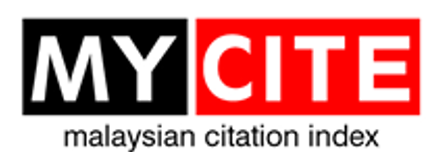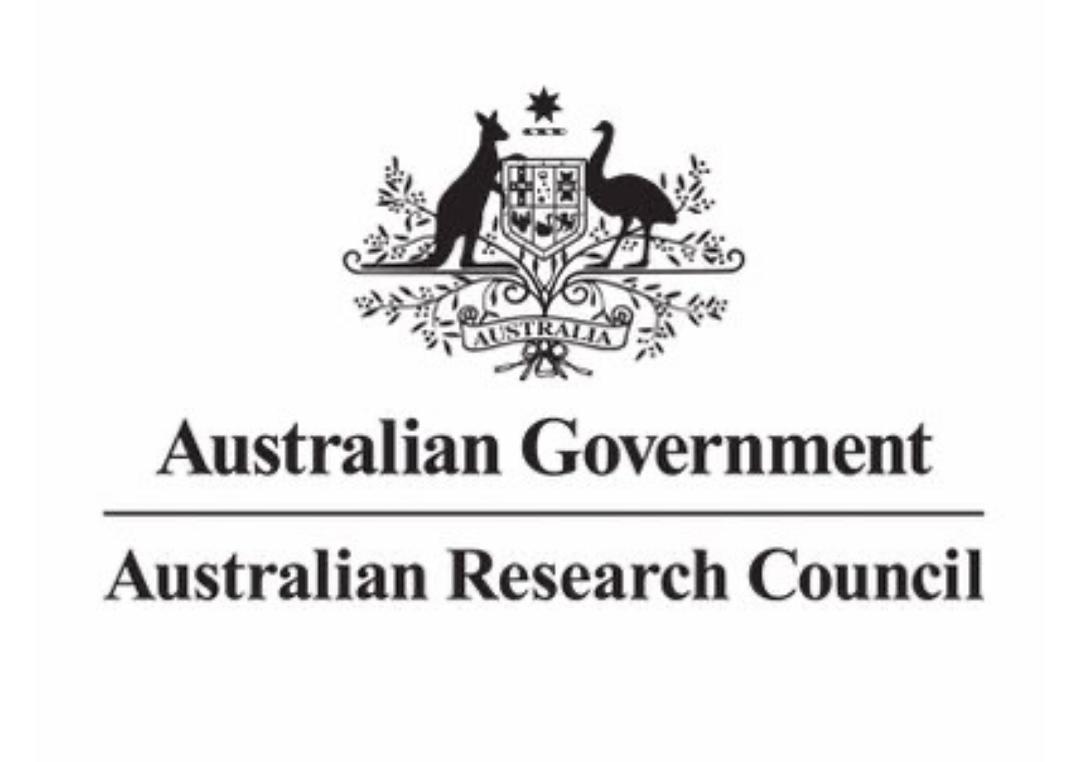Seasonal Abundance of Common Honey Bees and Floral Resources in Mixed Agriculture and Grassland Habitats
Seasonal floral resources and honey bee’s abundance
DOI:
https://doi.org/10.51200/jtbc.v22i.5405Keywords:
Apis cerana, Abundance, Floral resources, seasonal variation, correspondence analysisAbstract
Bee keeping is a traditional practice has been playing significant role in sustainable development of rural and tribal communities. Diversity and abundance of honey bee depends on the floral resources available and can be influenced by seasonal environmental changes. In the present study, we investigated seasonal abundance of hives of three common honey bees Apis cerana, A. florea and A. dorsata in a draught prone area in the Karjat Taluka, Maharashtra (India) for three consecutive years. Also, the flowering plants providing floral resources and their seasonal composition were studied. The study was conducted in mixed agriculture and grassland habitats at 11 locations. The study revealed that A. florea is the most abundant species followed by A. cerana and A. dorsata and their proportion remains similar in different seasons. A total of 72 plant species were recorded with nectar and pollen as floral resources. The proportion of agriculture crop plants was high in monsoon season. The composition of flowering plants varies in different seasons. The results of the present study suggest that in mixed agriculture and grassland ecosystem support the abundance of A. florea species. The changes in the seasonal floral resources do affect the honey bee species abundance. The results of the present study will be helpful as baseline information for the sustainable development of apiculture in mixed agriculture and grassland habitat.
References
Abrol DP (2020) The Future Role of Dwarf Honeybees in Natural and Agricultural Systems (1st Edition). Boca Raton: CRC Press. 338 pp. https://doi.org/10.1201/9781003033936.
Abrol DP (2023) Beekeeping for sustainable economic development of India: Challenges and opportunities. Journal of the Indian Institute of Science 103(4): 997–1017. https://doi.org/10.1007/s41745-023-00374-9.
Al-Ghamdi AA, Al-Sagheer NA (2023) Plant species as potential forage for honey bees in the Al-Baha mountain region in southwestern Saudi Arabia. Plants 12(6): 1402. https://doi.org/10.3390/plants12061402.
Balachandran C, Chandran MDS, Ramachandra TV (2014) Keystone food resources for honey bees in South Indian west coast during monsoon. Current Science 106(10): 1379–1386.
Bänsch S, Tscharntke T, Ratnieks FLW, Härtel S, Westphal C (2020) Foraging of honey bees in agricultural landscapes with changing patterns of flower resources. Agriculture, Ecosystems & Environment 291: 106792. https://doi.org/10.1016/j.agee.2019.106792.
Basu A, Purkait S (2023) Evaluating apiculture as a sustainable livelihood option in the wake of climate change: West Bengal, India. In: Alam A & Rukhsana (eds.). Climate Change, Agriculture and Society. Cham: Springer International Publishing. Pp. 37–63. https://doi.org/10.1007/978-3-031-28251-5_3.
Blaauw BR, Isaacs R (2014) Larger patches of diverse floral resources increase insect pollinator density, diversity, and their pollination of native wildflowers. Basic and Applied Ecology 15(8): 701–711. https://doi.org/10.1016/j.baae.2014.10.001.
Chauhan M, Farooqui A, Trivedi A (2017) Plants foraged by bees for honey production in northern India: The diverse flora of India and its implications for apiculture. Acta Palaeobotanica 57(1): 119–132.
Coffey MF, Breen J (1997) Seasonal variation in pollen and nectar sources of honey bees in Ireland. Journal of Apicultural Research 36(2): 63–76. https://doi.org/10.1080/00218839.1997.11100932.
Dalwai A (2012) Dynamics of agricultural growth in India. Indian Journal of Agricultural Economics 67(1): 27–45.
Danner N, Molitor AM, Schiele S, Härtel S, Steffan‐Dewenter I (2016) Season and landscape composition affect pollen foraging distances and habitat use of honey bees. Ecological Applications 26(6): 1920–1929. https://doi.org/10.1890/15-1840.1.
Decourtye A, Mader E, Desneux N (2010) Landscape enhancement of floral resources for honey bees in agro-ecosystems. Apidologie 41(3): 264–277. https://doi.org/10.1051/apido/2010024.
Fisher K, Gonthier DJ, Ennis KK, Perfecto I (2017) Floral resource availability from groundcover promotes bee abundance in coffee agroecosystems. Ecological Applications 27(6): 1815–1826. https://doi.org/10.1002/eap.1568.
Goyal NP (1974) Apis Cerana Indica and Apis Mellifera as complementary to each other for the development of apiculture. Bee World, 55(3): 98–101. https://doi.org/10.1080/0005772X.1974.11097506.
Guezen JM, Forrest JRK (2021) Seasonality of floral resources in relation to bee activity in agroecosystems. Ecology and Evolution 11(7): 3130–3147. https://doi.org/10.1002/ece3.7260.
Hammer O, Harper D (2001) PAST: Palentological statistics software package for education and data analysis. Palaeontologia Electronica 4(1): 1–9.
Horn J, Becher M A, Johst K, Kennedy PJ, Osborne JL, Radchuk V, Grimm V (2021) Honey bee colony performance affected by crop diversity and farmland structure: A modeling framework. Ecological Applications 31(1): e02216. https://doi.org/10.1002/eap.2216.
Indhu A, Lazar S, Prasad, Anupapama K (2022) Pollinators in tropical ecosystems of Southern India with emphasis on the native pollinators Apis cerana indica and Tetragonula iridipennis. Indian Journal of Entomology 85(4): 1187–1199. https://doi.org/10.55446/IJE.2021.369.
Jamwal S, Sharma N, Dhiman A, Kumari S (2021) Current status and future strategies to increase honey production in India. In: R Kumar, OP Agrawal, YA Hajam (ed.) Honey. Boca Raton: CRC press. Pp. 191–206. https://doi.org/10.1201/9781003175964-8.
Jha S, Kremen C (2013) Resource diversity and landscape-level homogeneity drive native bee foraging. Proceedings of the National Academy of Sciences 110(2): 555–558. https://doi.org/10.1073/pnas.1208682110.
Kaluza BF, Wallace H, Keller A, Heard TA, Jeffers B, Drescher N, Blüthgen N. Leonhardt SD (2017) Generalist social bees maximize diversity intake in plant species‐rich and resource‐abundant environments. Ecosphere 8(3): e01758. https://doi.org/10.1002/ecs2.1758.
Kamaraj N, Rasappan K (2024) Temporal and spatial foraging activity of Indian honey bee (Apis cerana indica F.) at different migratory sites. Sociobiology 71(1): Article 1. https://doi.org/10.13102/sociobiology.v71i1.9733.
Kishan M, Aruna R, Mishra G, Srinivasan MR (2017) Beekeeping in India. In: Omkar (Ed.), Industrial Entomology. Singapore: Springer Singapore. Pp. 35–66. https://doi.org/10.1007/978-981-10-3304-9_3.
Kumar R, Hajam YA, Kumar I, Neelam (2024) Insect pollinators’s diversity in the Himalayan region: Their role in agriculture and sustainable development. In: RC Sobti (Ed.), Role of Science and Technology for Sustainable Future. Springer Nature Singapore. Pp. 243–276. https://doi.org/10.1007/978-981-97-0710-2_16.
Lazar J, Prasad S, Barboni D, Das L, Kumaresan V, Anupama K (2024). Diversity matters: Diet of Apis cerana in southeast India includes one consistently occurring and several seasonally available floral sources. Palynology 48(1): 2255990. https://doi.org/10.1080/01916122.2023.2255990.
Malaviya D, Roy A, Kaushal P (2018) Rangelands/Grasslands of India: Current status and future prospects. In: Squires V, Dengler J, Hua L and Feng H (Eds.), Grasslands of the World. Boca Raton: CRC press. Pp. 221–238).
Mensah S, Veldtman R, Seifert T (2017) Potential supply of floral resources to managed honey bees in natural mistbelt forests. Journal of Environmental Management 189: 160–167. https://doi.org/10.1016/j.jenvman.2016.12.033.
Mishra R (2013) Honeybees and Their Management in India. New Delhi: Indian Council of Agricultural Research. 168 pp.
Monceau K, Maher N, Bonnard O, Thiéry D (2013) Predation pressure dynamics study of the recently introduced honeybee killer Vespa velutina: Learning from the enemy. Apidologie 44(2): 209–221. https://doi.org/10.1007/s13592-012-0172-7.
Narang A, Kumar D, Gupta G (2022) Political, economical, social, technological and SWOT analysis of beekeeping as a successful enterprise in India: An overview. Journal of Applied and Natural Science 14(1): 194–202. https://doi.org/10.31018/jans.v14i1.3312.
Neov B, Georgieva A, Shumkova R, Radoslavov G, Hristov P (2019) Biotic and abiotic factors associated with colonies mortalities of managed honey bee (Apis mellifera). Diversity 11(12): 237. https://doi.org/10.3390/d11120237.
Nicholls CI, Altieri MA (2013) Plant biodiversity enhances bees and other insect pollinators in agroecosystems. A review. Agronomy for Sustainable Development 33(2): 257–274. https://doi.org/10.1007/s13593-012-0092-y.
Parveen N, Kumar K, Miglani R, Kumar A, Siddiqui U, Rawat G, Singh Bisht S (2022) Factors affecting honey bee population in Western Himalaya of Uttarakhand: An observational study. Asian Journal of Biological and Life Sciences 11(2): 543–553. https://doi.org/10.5530/ajbls.2022.11.74.
Potts SG, Vulliamy B, Dafni A, Ne’eman G, Willmer P (2003) Linking bees and flowers: How do floral communities structure pollinator communities? Ecology 84(10): 2628–2642. https://doi.org/10.1890/02-0136.
Rathee M, Chaudhary OP, Dalal PK (2023). Advertising the significance of diverse plant taxa to Apis mellifera foragers during the dearth period in North Haryana. Indian Journal of Entomology 112–120. https://doi.org/10.55446/IJE.2023.1172.
Requier F, Garnery L, Kohl PL, Njovu HK, Pirk CWW, Crewe RM, Steffan-Dewenter I (2019) The conservation of native honey bees is crucial. Trends in Ecology & Evolution 34(9): 789–798. https://doi.org/10.1016/j.tree.2019.04.008.
Rivers-Moore J, Andrieu E, Vialatte A, Ouin A (2020) Wooded semi-natural habitats complement permanent grasslands in supporting wild bee diversity in agricultural landscapes. Insects 11(11): 812. https://doi.org/10.3390/insects11110812.
Rogers SR, Tarpy DR, Burrack HJ (2014) Bee species diversity enhances productivity and stability in a perennial crop. PLoS ONE 9(5): e97307. https://doi.org/10.1371/journal.pone.0097307.
Rollin O, Bretagnolle V, Decourtye A, Aptel J, Michel N, Vaissière BE, Henry M (2013) Differences of floral resource use between honey bees and wild bees in an intensive farming system. Agriculture, Ecosystems & Environment 179: 78–86. https://doi.org/10.1016/j.agee.2013.07.007.
Roubik DW, Wolda H (2001) Do competing honey bees matter? Dynamics and abundance of native bees before and after honey bee invasion. Population Ecology 43(1): 53–62. https://doi.org/10.1007/PL00012016.
Sen S, Borkataki S, Sutradhar P, Srisaranya P (2023) Diversity, abundance and foraging dynamics of pollinators of cucumber with special reference to bees in Jorhat, Assam, India. Journal of Entomological Research 47(4): 770–776. https://doi.org/10.5958/0974-4576.2023.00141.X.
Sharma K, Monobrullah M, Mohanasundaram A, Ramani R (2016) Benificial insect farming, Ranchi: ICAR - Indian Institute of Natural Resina and Gums. 204 pp.
Singh NP, Pradhan SG (1999) Flora of Ahmednagar district: Maharashtra. Dehradun: Bishen Singh Mahendra Pal Singh. 707 pp.
Smart MD, Pettis JS, Euliss N, Spivak MS (2016) Land use in the Northern Great Plains region of the U.S. influences the survival and productivity of honey bee colonies. Agriculture, Ecosystems & Environment 230: 139–149. https://doi.org/10.1016/j.agee.2016.05.030.
Sutter L, Jeanneret P, Bartual AM, Bocci G, Albrecht M (2017) Enhancing plant diversity in agricultural landscapes promotes both rare bees and dominant crop‐pollinating bees through complementary increase in key floral resources. Journal of Applied Ecology 54(6): 1856–1864. https://doi.org/10.1111/1365-2664.12907.
Waykar B, Baviskar RK (2015) Diversity of bee foraging flora and floral calendar of Paithan taluka of Aurangabad district (Maharashtra), India. Journal of Applied Horticulture 17(02): 155–159. https://doi.org/10.37855/jah.2015.v17i02.29.
Williams NM, Ward KL, Pope N, Isaacs R, Wilson J, May EA, Ellis J, Daniels J, Pence A, Ullmann K, Peters J (2015) Native wildflower plantings support wild bee abundance and diversity in agricultural landscapes across the United States. Ecological Applications 25(8): 2119–2131. https://doi.org/10.1890/14-1748.1.
Published
How to Cite
Issue
Section
License
Copyright (c) 2025 The JTBC allows authors to retain the copyright of their publications without restrictions, but authors will grant the JTBC the right of first publication, and other non-exclusive publishing rights. Authors retain the right to use the substance of the article in their future works, provided that its prior publication in this journal is acknowledged.

This work is licensed under a Creative Commons Attribution-NonCommercial 4.0 International License.
BY: credit must be given to the creator.
NC: Only noncommercial uses of the work are permitted.
This journal provides open access to its content under CC BY-NC 4.0 on the principle that making research freely available to the public supports greater international collaboration and information exchange.











